Start learning 50% faster. Sign in now
We have, C sits second to the left of the one who likes Blue colour. Two persons sit between C and H. From the above condition, there are two possibilities. 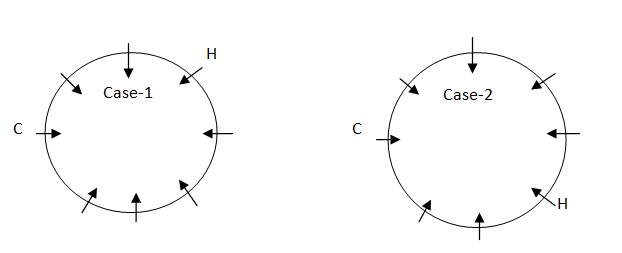 Again we have, B sits second to the left of D. From the above condition and note, there are four possibilities.
Again we have, B sits second to the left of D. From the above condition and note, there are four possibilities. 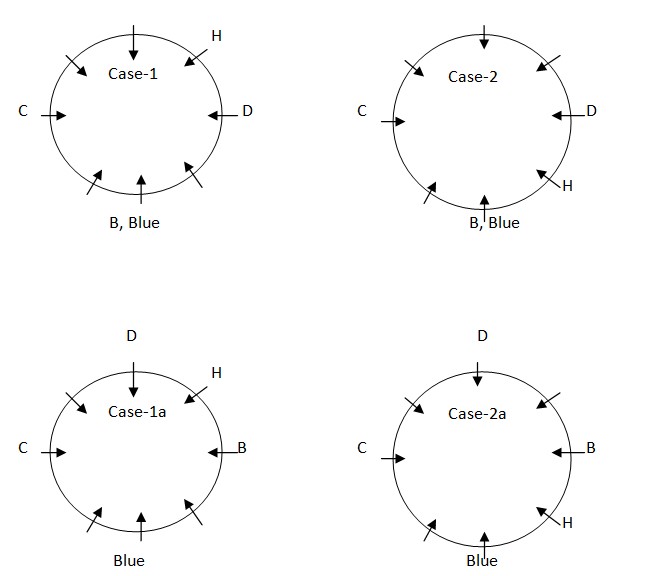 Again we have, G sits immediate left of the one who likes Black. Neither C nor D like Black. G and D are not immediate neighbors. G does not sit opposite to D. From the above condition, Case1 and case2a get eliminated because there is no possibility to place G.
Again we have, G sits immediate left of the one who likes Black. Neither C nor D like Black. G and D are not immediate neighbors. G does not sit opposite to D. From the above condition, Case1 and case2a get eliminated because there is no possibility to place G. 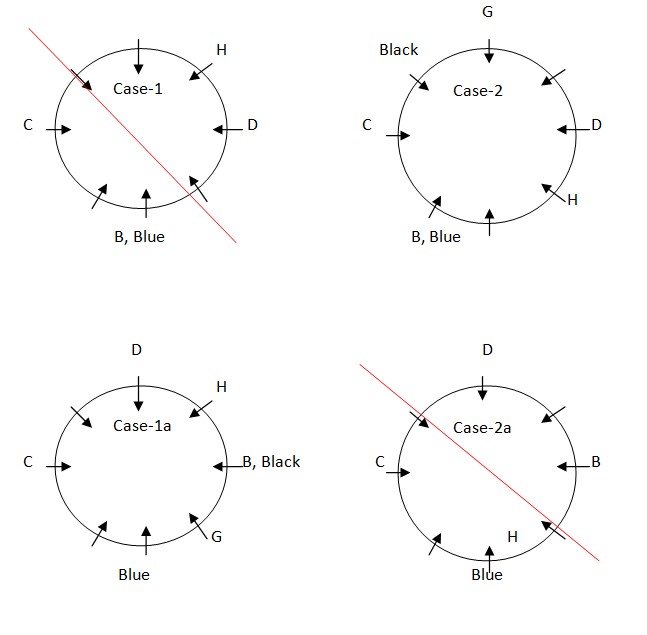 Again we have, The number of persons sit between E and A is the same as the number of persons sit between F and the one who likes Brown, when counted from the right of both A and F F sits opposite to the one who likes Orange. Neither G nor H like Orange. From the above condition and note, case1a gets eliminated because there is no possibility to place F.
Again we have, The number of persons sit between E and A is the same as the number of persons sit between F and the one who likes Brown, when counted from the right of both A and F F sits opposite to the one who likes Orange. Neither G nor H like Orange. From the above condition and note, case1a gets eliminated because there is no possibility to place F. 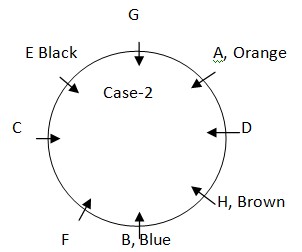 Againwe have, TheonewholikesWhitesitssecondto the right of the one who likes Red. DdoesnotlikeRed. FdoesnotlikeYellowcolour. Fromtheabovecondition,case2showsthefinalarrangement.
Againwe have, TheonewholikesWhitesitssecondto the right of the one who likes Red. DdoesnotlikeRed. FdoesnotlikeYellowcolour. Fromtheabovecondition,case2showsthefinalarrangement. 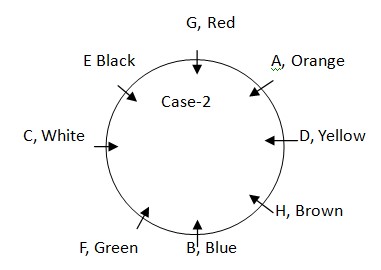
In which year was the Indus Valley civilization discovered?
The founder of Sayyid Dynasty was
Who was the original builder of Jantar Mantar in New Delhi?
What is the first sermon of Buddha called as?
Which of the following social and educational reforms was/were introduced by Akbar?
1. He completely prohibited the practice of sati throughout...
The Emblem of the Chola Dynasty was
Taxila was historically the capital of which ancient Indian Mahajanapada?
The First Battle of Tarain was fought in 1191 between Muhammad of Ghor and Prithviraj Chauhan. Prithviraj Chauhan was a king from the Chauhan dynasty wh...
Consider the following pairs: Ancient names Modern names (Rig vedic rivers)
1. Parushini : Jhelum
2. Vipasha : Beas
3. Askini : Che...
Consider the following statements with reference to Microliths:
1.They are applied to tools made on microblade or bladelets.
2.They are ...